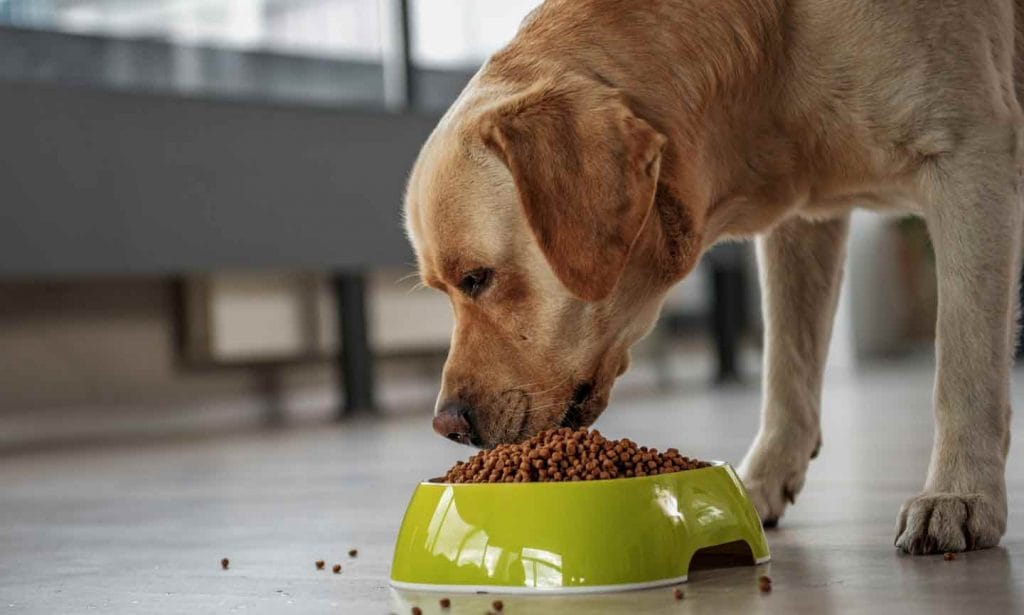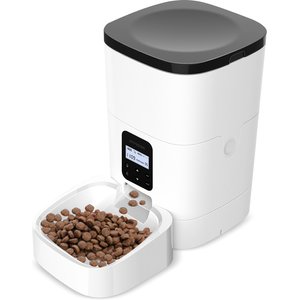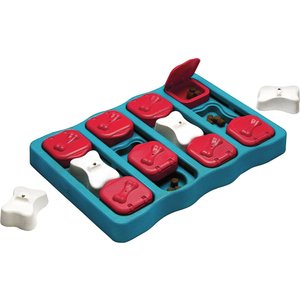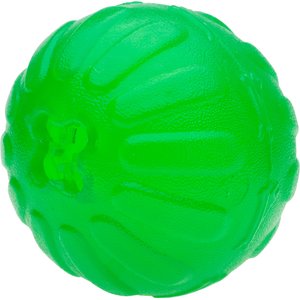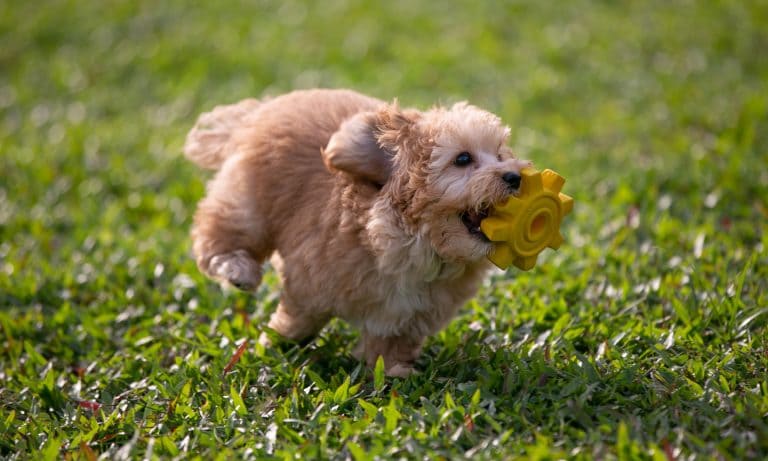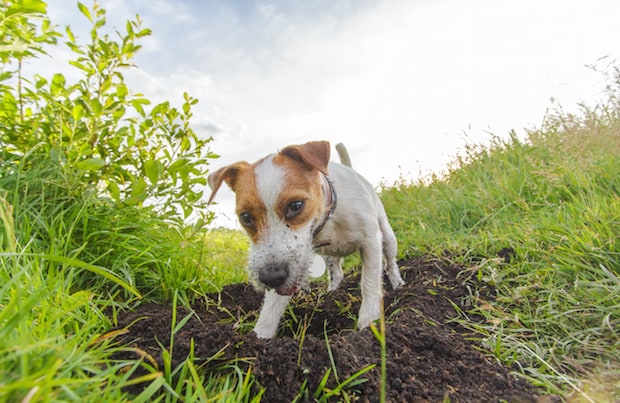It’s no secret: Dogs love food. Many hungry dogs will scarf down whatever is in front of them without coming up for air. But although a dog’s speed-eating habits aren’t usually a cause for concern, eating too quickly can cause a variety of problems: choking, gagging, vomiting and even dangerous conditions like bloat, says Carol Osborne, DVM, at Chagrin Falls Veterinary Center and Pet Clinic in Chagrin Falls, Ohio.
So how can you slow your dog’s eating to keep them healthy and happy? Follow these 11 vet-recommended tactics to help your pup savor the flavor a little longer.
The Dangers of Fast Eating

If your dog is eating too fast, it’s likely their food isn’t being chewed properly. Similar to humans, fast eating can pose several risks, some potentially life-threatening.
Risks of eating too fast include:
- Choking
- Vomiting/regurgitation
- Bloat—a potentially deadly condition when a dog’s stomach fills with food, air or liquid and expands, placing pressure on other organs that’s more likely to affect for large, deep chested dogs like Great Danes and Doberman Pinschers.
- Gastric dilatation-volvulus (GDV), another life-threatening condition in which a dog swallows a lot of air, resulting in the stomach enlarging and then twisting on itself. Large dog breeds with deep chests are also more at risk for GDV.
If you suspect your dog is experiencing either bloat or GDV, contact your veterinarian immediately.
Fortunately, bloat and other health issues can be prevented by slowing down your dog’s eating. Here are some tips to try for your dog’s next meal.
How to Slow Your Dog’s Eating

1 Use an automatic feeder.
2 Use a puzzle feeder.
3 Place your dog’s food in muffin tins.
4 Separate your dogs during mealtimes.
5 Use a snuffle mat.
6 Get on a feeding schedule.
7 Water down your dog’s food.
8 Buy a slow feeder bowl.
9 Place large objects in your dog’s bowl.
10 Use treat-dispensing toys.
11 Turn mealtime into a training session.
How Often Should I Feed My Dog?
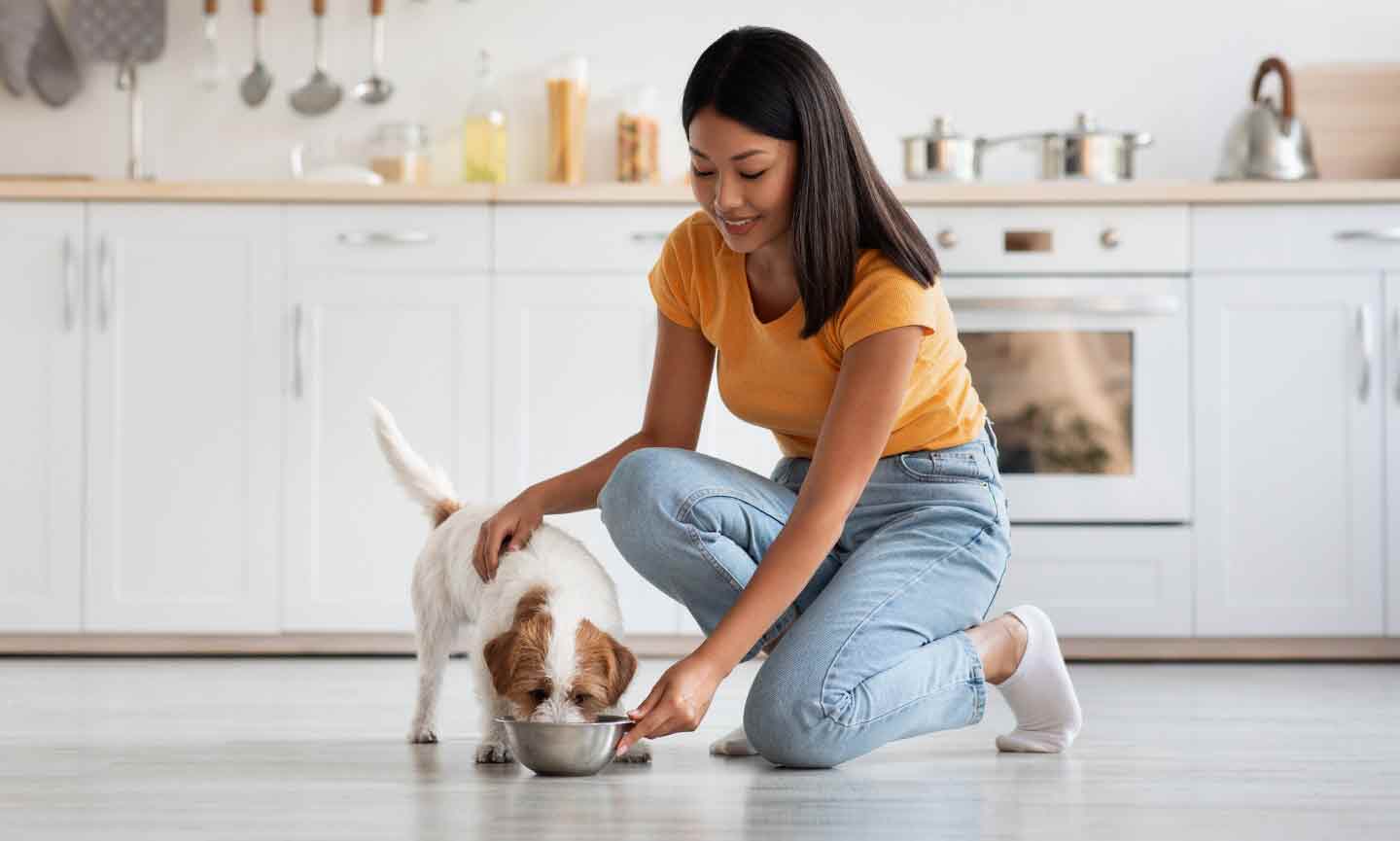
Follow these tips from Dr. Osborne to decide how much to feed your dog. As always, bring any concerns or questions to your veterinarian to get recommendations tailored to your unique pup.
- Feed your dog at least twice a day, no matter what size or breed.
- Dogs who are at higher risk for bloat should consume three or more meals per day.
- Let your dog rest for one to two hours after being fed, because exercise after a large meal may cause bloat.
- If you notice a spike in your dog’s appetite, it may be due to an underlying condition like irritable bowel syndrome, diabetes, or Cushing’s disease that affects the body’s ability to digest or absorb the vitamins and nutrients in food.
- If your dog eats too fast no matter what you try, consult your veterinarian to rule out any medical reasons for their behavior. If they get a clean bill of health, consider contacting a dog behaviorist who can offer suggestions.
More Dog Feeding Tips
Share:
